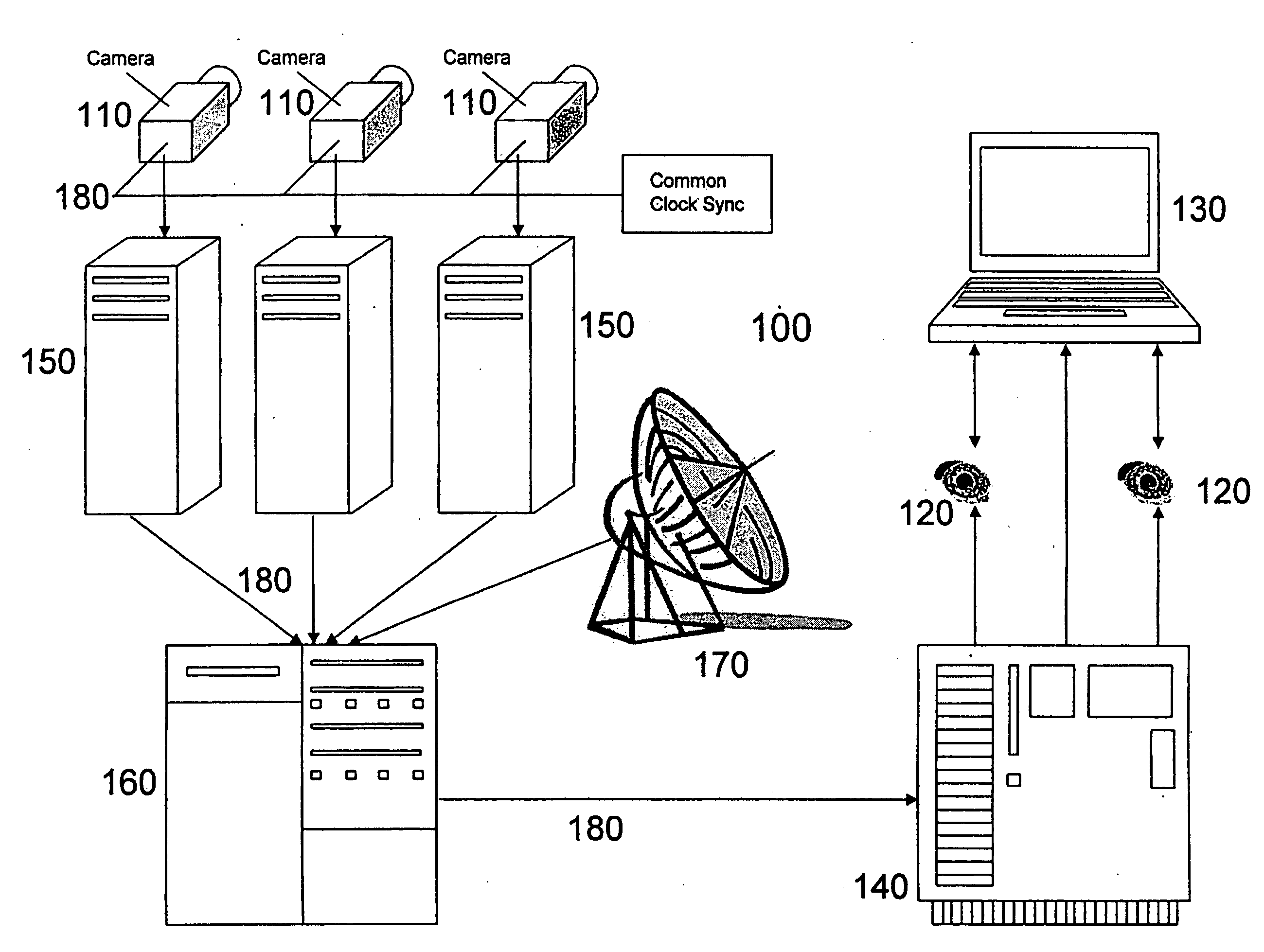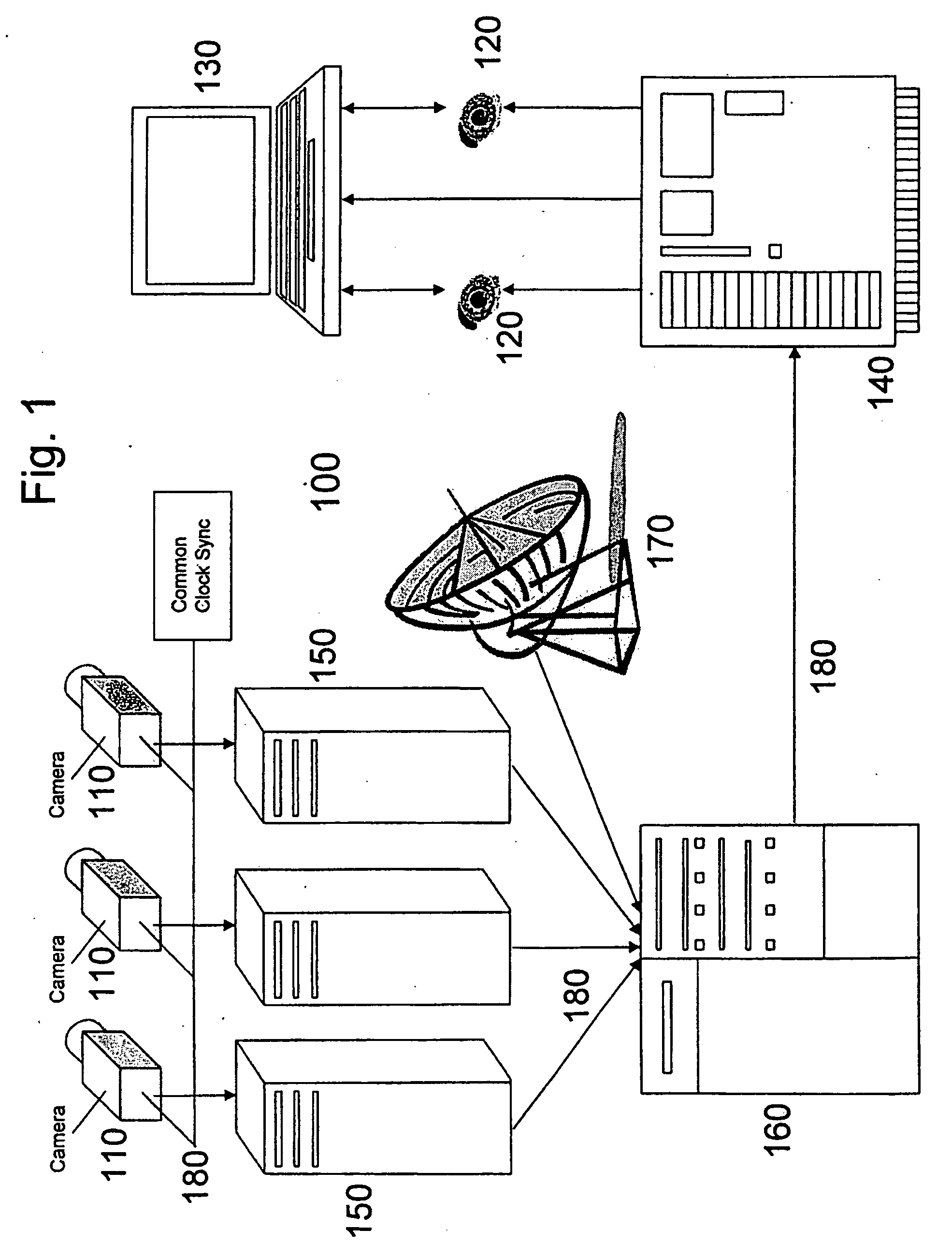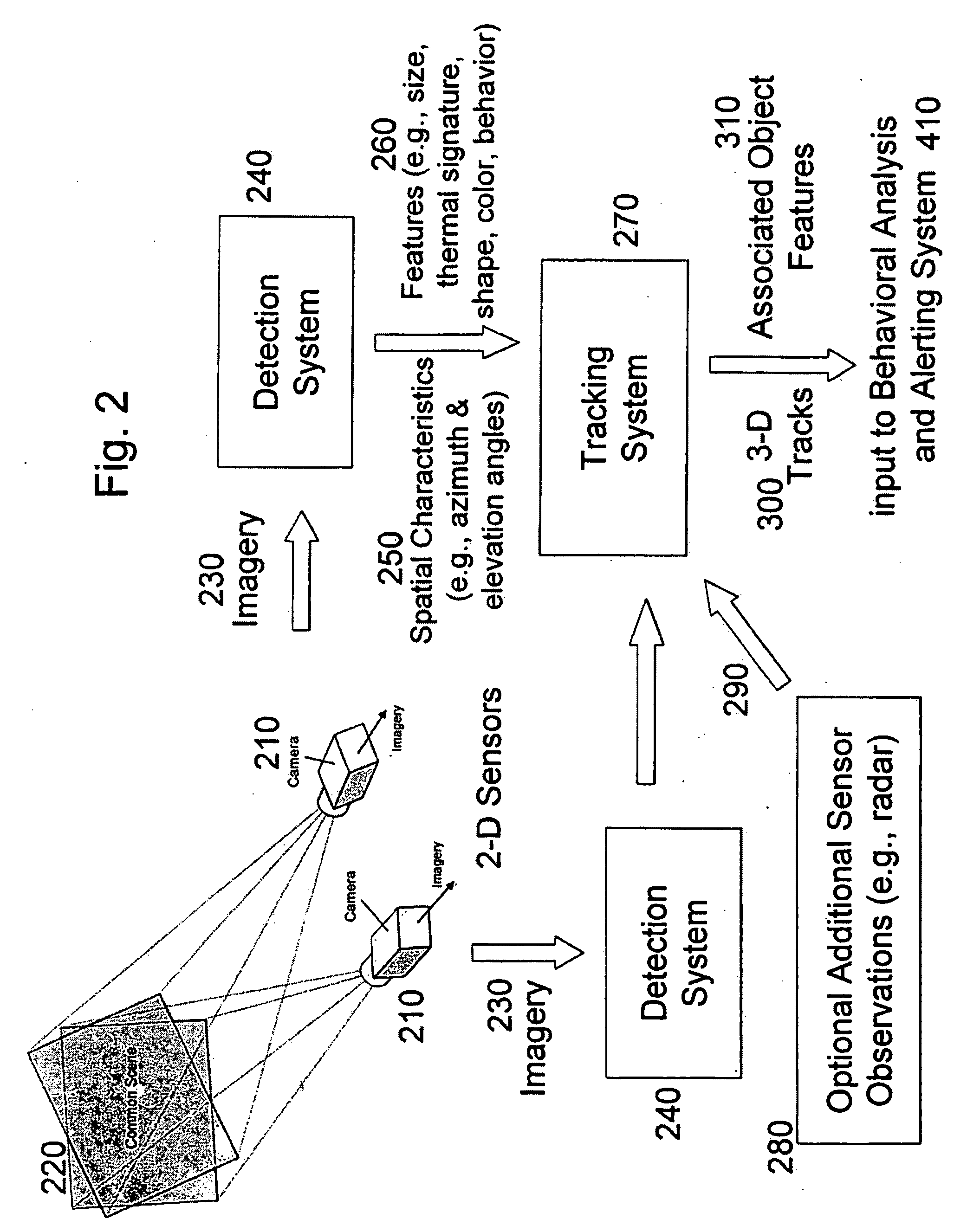System and method for real-time 3-d object tracking and alerting via networked sensors
a networked sensor and object tracking technology, applied in the field of real-time three-dimensional (3d) object tracking and alerting, can solve the problems of frequent false alarms, reduce false alarms and operator fatigue, and achieve the effect of reducing false alarms and operator fatigue, and fast decision-making and countermeasure deploymen
- Summary
- Abstract
- Description
- Claims
- Application Information
AI Technical Summary
Benefits of technology
Problems solved by technology
Method used
Image
Examples
Embodiment Construction
[0032]The basic approach in an exemplary embodiment is to position numerous 2-D sensors (e.g., cameras) with overlapping wide-area fields of view so that multiple cameras observe each area of interest. First, the sensors are calibrated to map their 2-D images to specific vectors in 3-D space (e.g., each pixel on a camera image corresponds to a precise vector or line emanating from the camera in 3-D). With the help of image processing techniques, the sensors not only detect movement (kinematics), they can also detect features (such as color, size, shape, thermal signature, classification, behavior, etc.). Some of these (like motion, action, behavior, and intention) require several observations in order to detect.
[0033]The sensors are also time-synchronized and networked so that their images can be combined with those of the other sensors, enabling an object entering an area of interest to be tracked in 3-D by combining the images (kinematics and features) of multiple sensors through ...
PUM
 Login to View More
Login to View More Abstract
Description
Claims
Application Information
 Login to View More
Login to View More - R&D
- Intellectual Property
- Life Sciences
- Materials
- Tech Scout
- Unparalleled Data Quality
- Higher Quality Content
- 60% Fewer Hallucinations
Browse by: Latest US Patents, China's latest patents, Technical Efficacy Thesaurus, Application Domain, Technology Topic, Popular Technical Reports.
© 2025 PatSnap. All rights reserved.Legal|Privacy policy|Modern Slavery Act Transparency Statement|Sitemap|About US| Contact US: help@patsnap.com



